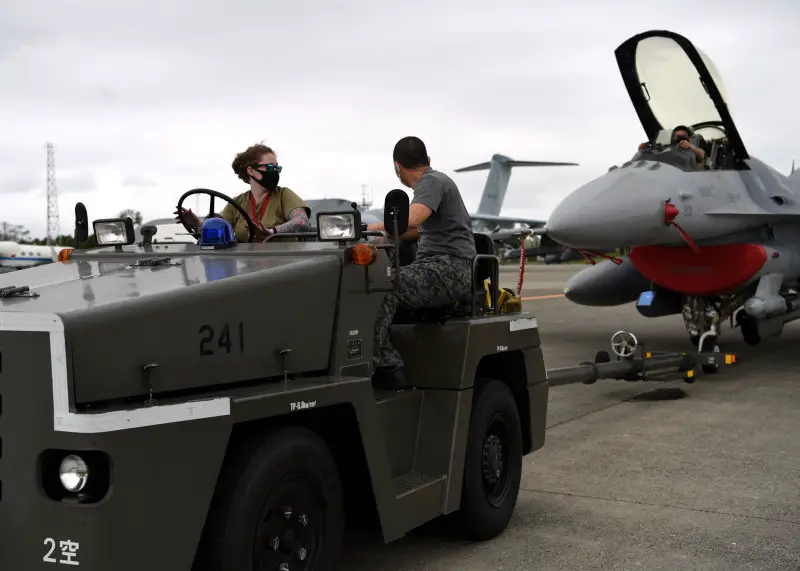U.S. Air Force and the Japan Air Self-Defense Force Airmen conducted bilateral training centered on honing defensive counter-air and Agile Combat Employment capabilities, and developing multi-capable Airmen during an Aviation Training Relocation event at Chitose Air Base, Japan, Aug. 24-28. Led by Fifth Air Force, the training incorporated Airmen and aircraft from the U.S. Air Force, Pacific Air Forces Command’s 35th Fighter Wing, 374th Airlift Wing and 18th Wing, alongside the Japan Air Self-Defense Force Air Defense Command’s 2nd Air Wing and the Air Support Command’s 1st Tactical Airlift Group, 2nd Tactical Airlift Group and 3rd Tactical Airlift Group.
Overall, U.S. Air Force participants included approximately 200 personnel with six F-15 Eagles from the 67th Fighter Squadron and six F-16 Fighting Falcons from the 13th Fighter Squadron that relocated to Chitose (AB). Putting Airmen in scenarios outside their regular daily duties is central to the ACE concept, which calls for Airmen to be proficient in many skills necessary to support air operations. Creating a force of multi-capable Airmen reduces the personnel footprint required to disperse forces, enabling a faster, more efficient response to any potential threats. In addition, training accomplished on-site tested U.S. Air Force and Japan Air Self-Defense Force partners’ ability to work together.
“This Chitose (AB) Aviation Training Relocation provided a tremendous opportunity for the 67th Fighter Squadron’s operations, maintenance and support personnel to practice and perfect Agile Combat Employment capabilities with our U.S. Forces Japan and Koku-Jieitai partners,” said Lt. Col. Craig Van Beusekom, 67th Fighter Squadron commander.
“Here at Chitose (AB), we demonstrated deployable, secure communications and empowered bilateral personnel to refuel a U.S. Air Force F-15, F-16, and Koku-Jieitai F-15J Eagle aircraft with airlift-deployable fuel bladders.” said Master Sgt. Stephen Morin, 13th Aircraft Maintenance Unit production superintendent.
Prioritizing the training while managing a cautious approach with regard to COVID-19 for participants’ safety proved valuable based on the accomplishments for both U.S. Air Force and Koku-Jieitai members. Continuing to train alongside Japanese allies despite the challenges presented by COVID-19 is absolutely necessary to maintain strong bilateral interoperability and readiness to support the defense of Japan. U.S. Airmen observed strict preventative measures to mitigate the risk of COVID-19 infection and were able to take full advantage of the opportunity to strengthen bilateral ACE capabilities, further ensuring our ability to maintain peace and security in the Indo-Pacific.













